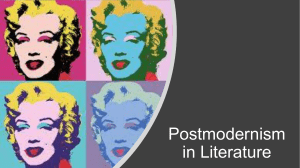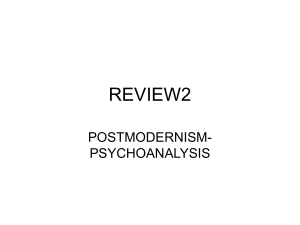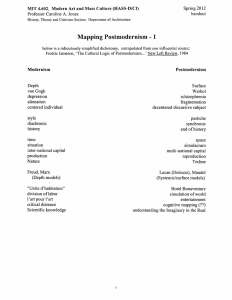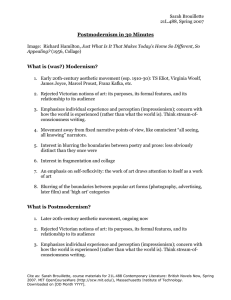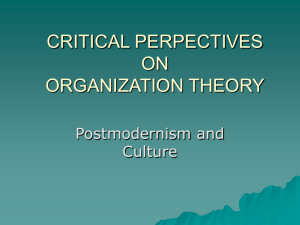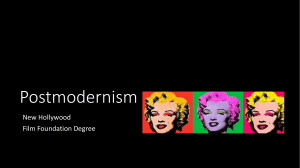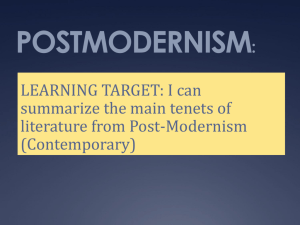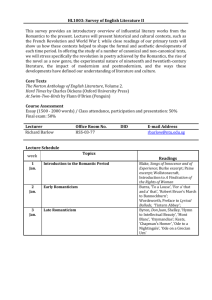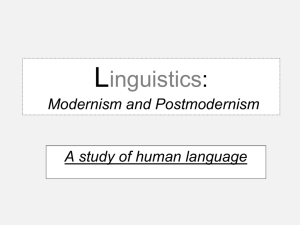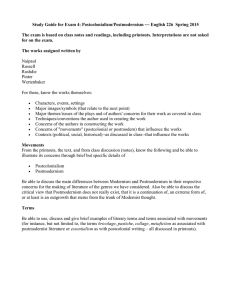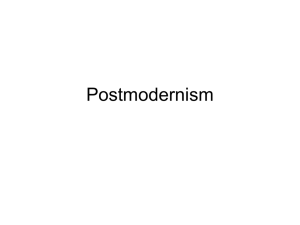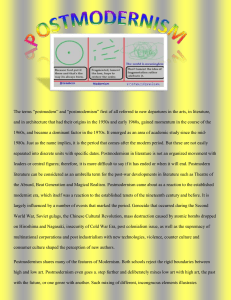21L.488 Literature and Development MIT Spring 2008 Professor Sarah Brouillette
advertisement
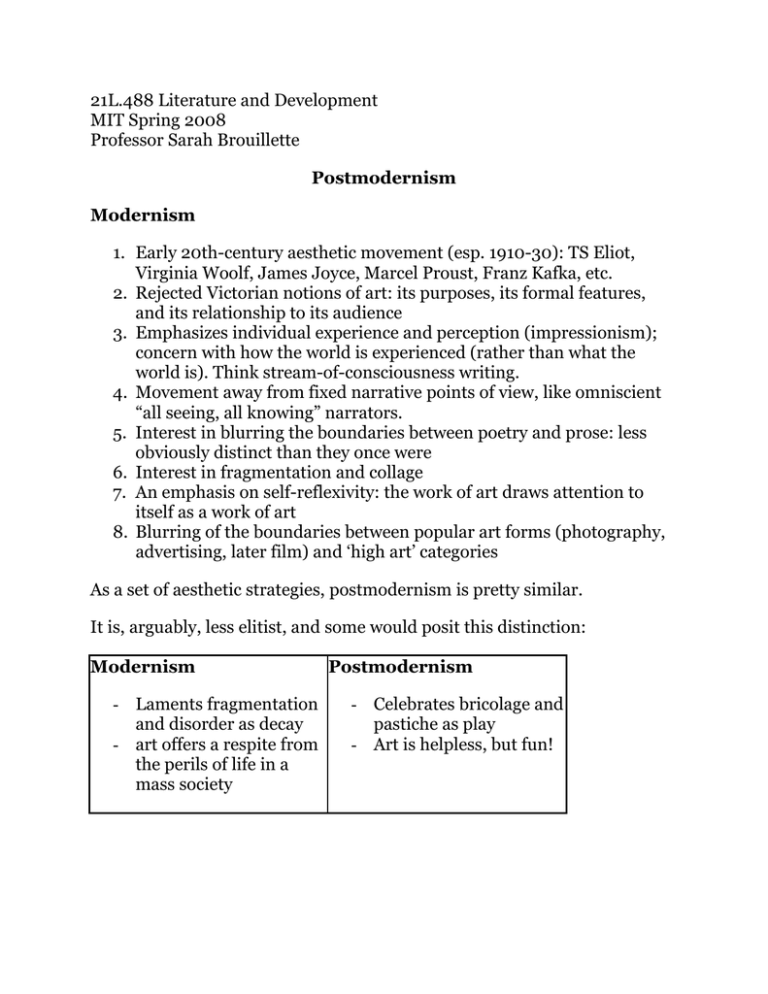
21L.488 Literature and Development MIT Spring 2008 Professor Sarah Brouillette Postmodernism Modernism 1. Early 20th-century aesthetic movement (esp. 1910-30): TS Eliot, Virginia Woolf, James Joyce, Marcel Proust, Franz Kafka, etc. 2. Rejected Victorian notions of art: its purposes, its formal features, and its relationship to its audience 3. Emphasizes individual experience and perception (impressionism); concern with how the world is experienced (rather than what the world is). Think stream-of-consciousness writing. 4. Movement away from fixed narrative points of view, like omniscient “all seeing, all knowing” narrators. 5. Interest in blurring the boundaries between poetry and prose: less obviously distinct than they once were 6. Interest in fragmentation and collage 7. An emphasis on self-reflexivity: the work of art draws attention to itself as a work of art 8. Blurring of the boundaries between popular art forms (photography, advertising, later film) and ‘high art’ categories As a set of aesthetic strategies, postmodernism is pretty similar. It is, arguably, less elitist, and some would posit this distinction: Modernism - Laments fragmentation and disorder as decay - art offers a respite from the perils of life in a mass society Postmodernism - Celebrates bricolage and pastiche as play - Art is helpless, but fun! But let’s back up, because it might be useful to think of postmodernism as being after and anti modernity (so, modern society) rather than after and anti modernism (so, modern art). Characteristics of Modernity 1. I have a stable and coherent self who is rational and universal 2. I know the world through reason and rationality 3. I produce objective truth or "science” that isn’t constrained by me 4. This truth is what leads to progress and improvement 5. Reason, truth, and “the good” are synonymous 6. Science is the best application of my rationality: it is neutral and objective and unbiased 7. Language is how rationality is expressed and its discoveries communicated; it is “transparent” and can objectively represent the reality or the world (think photography) 8. There is no difference between objects in the world and the words used to name them in language 9. These premises stand behind and support EVERYTHING: democracy, law, ethics, and aesthetics Note the pressure to maintain the “ordered” world of the rational self: “disorder” becomes a major fear; people constantly imagine kinds of “disorder”: things that aren’t rational; that aren’t ethnical; that are “other” to our own culture and way of knowing; that are non-hygienic or unclean…and so on… So, in this light, what is Postmodernism? 1. a challenge to order 2. a dismantling of enlightenment ideas behind modern culture 3. the end of “master narratives” - the grand stories we tell ourselves about ourselves and our culture: Progress; Science; Rationality; God 4. it the recognition of small, provisional kinds of knowledge 5. no stable rational self observing the world 6. self is fragmented and doesn’t understand its own ways of operating, has a deep psychology that splits it into many bits and parts 7. the observing self influences the creation of “knowledge” (the observer effect in science) 8. language doesn’t “represent” reality; it constructs it and construes it 9. no necessary relationship between words and the objects they name 10. all culture and information is positional; it isn’t necessarily “subjective” but it isn’t objective and entirely “true” and universal either 11. Human identity is positional too; it isn’t natural and “true”; it is a performance, a putting on of a COSTUME that isn’t a disguise: IT IS ALL THERE IS
